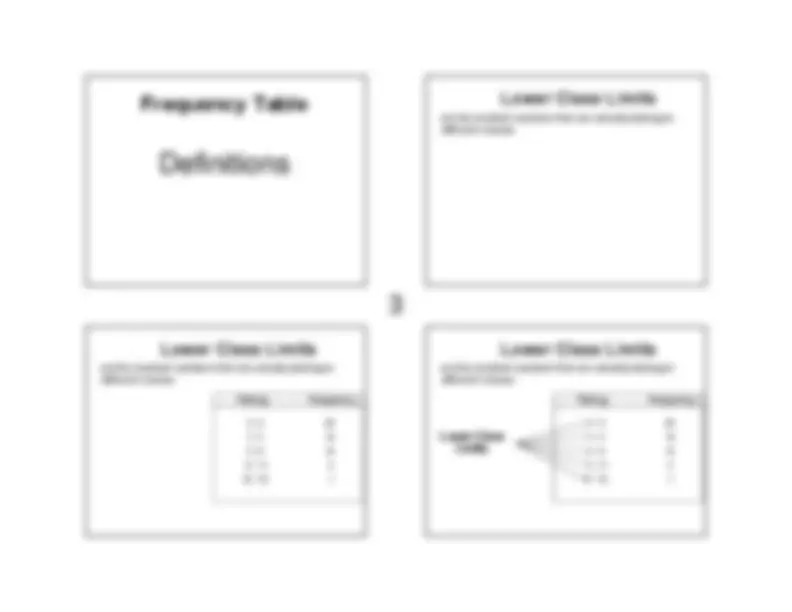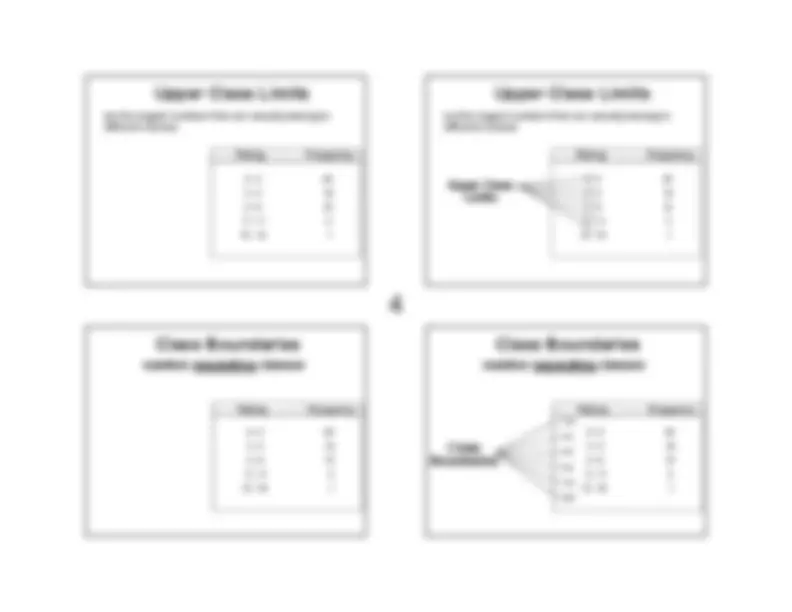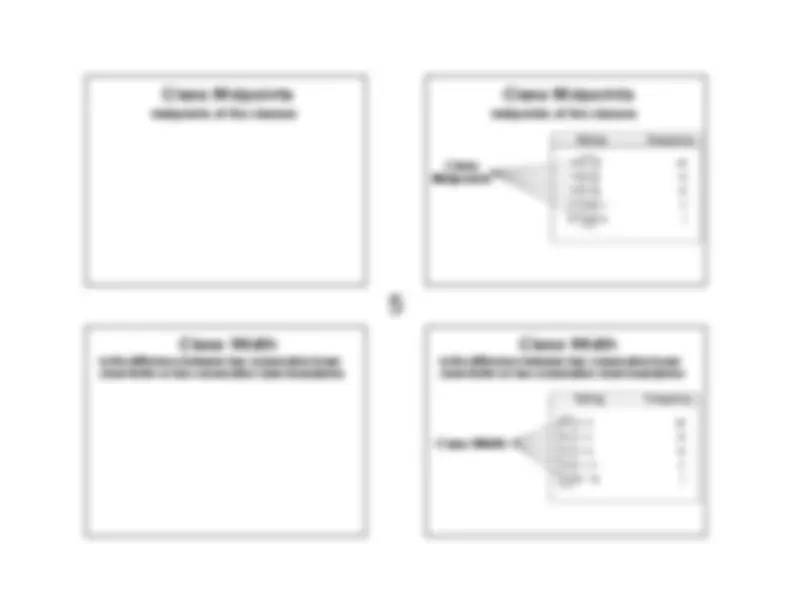





Study with the several resources on Docsity

Earn points by helping other students or get them with a premium plan


Prepare for your exams
Study with the several resources on Docsity

Earn points to download
Earn points by helping other students or get them with a premium plan
Community
Ask the community for help and clear up your study doubts
Discover the best universities in your country according to Docsity users
Free resources
Download our free guides on studying techniques, anxiety management strategies, and thesis advice from Docsity tutors
An overview of frequency distributions, including definitions of lower and upper class limits, class boundaries, and class midpoints. It also covers constructing a frequency table, relative frequency tables, and cumulative frequency tables. An extract from a statistics textbook and is intended for university students.
Typology: Study notes
1 / 7

This page cannot be seen from the preview
Don't miss anything!




2
2 -1^ ^ Descriptive Statisticssummarize or describe the importantcharacteristics of a known set ofpopulation data ^ Inferential Statisticsuse sample data to make inferences (orgeneralizations) about a population
Overview
^ Frequency Tablelists data values (either individually or bygroups of intervals), along with theircorresponding frequencies (or counts).
2- Frequency Distributions
4
Upper Class Limits
Upper Class Limits Upper ClassLimits
Class Boundaries
Class Boundaries
5
Class Midpoints midpoints of the classes
Class Midpointsmidpoints of the classes
Class Width is the difference between two consecutive lowerclass limits or two consecutive class boundaries
Class Width
is the difference between two consecutive lowerclass limits or two consecutive class boundaries
7
Cumulative Frequency Table
Less than 3
Less than 6
Less than 9
Less than 12
Less than 15
Frequency Tables 0 - 2^20 3 - 5^14 6 - 8^15 9 - 11^
Rating^ Frequency
RelativeRatingFrequency0 - 2 38.5%3 - 5 26.9%6 - 8 28.8%9 - 11 3.8%12 - 14 1.9%
Less than 3
Less than 6
Less than 9
Less than 12 Less than 15 Rating^
CumulativeFrequency